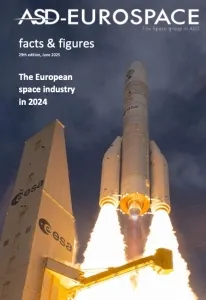It aims at measuring the value of the market for space systems design, development and production in Europe.
ASD-Eurospace
Among the headline figures are overall sales revenues of €8.8 billion, a 3.3% increase on 2023’s €8.570 billion.
It also records space employment level in Europe at 66K, representing a 4% increase on year-on-year. The reports notes an ‘explosion’ of startups with larger groups receding.
The findings are not overwhelmingly positive, however. It notes that sector productivity is receding and profits are at an all-time low, apparently (in terms of EBIT to sales ratio). And sector overcapacity is looming.
The sales growth is supported by European institutional demand, but commercial demand is at a low, it finds.
Basically, it warns that the promise of New Space has not yet been realised.
Space infrastructure
In terms of space segments, it finds government funding leads the way with. Unsurprising in these unsettle geo-political times. Civil earth observation (EO) ties with space science and exploration, in joint third-place, behind funding related to human spaceflight.
For commercial funding, civil communications are the main segment, followed by EO and support for military comms.
Note that this report from ASD-Eurospace does not cover adjacent non-space products. For example, missiles or consumer-end terminals such as GPS receivers, Satellite TV receivers and dishes. Nor are the provision of services based on the exploitation of space assets considered.
You can view a full presentation of the 29th edition of the ASD-Eurospace Report below. Access to the report itself is via the Eurospace website.
In 2004, Eurospace formally became the Space Group of ASD (Aerospace, Security and Defence Industries Association of Europe – formerly AECMA).
Image: ASD-Eurospace
See also: European Space Agency looks ahead with ESA Strategy 2040

